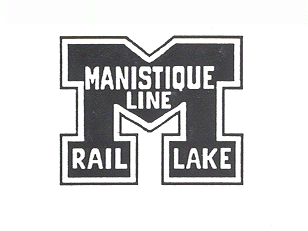n scale
model railroads of michigan
model railroading 101
The following words and definitions are commonly used in model railroading. This information is provided to help new modelers better understand some of the language used in our great hobby.
Layout: the term used to refer to how an individual sets up his or her model railroad. Layouts can fit in a briefcase, fill entire buildings, or circle your property (garden railways). My site focuses on Michigan rail lines both past and present.
Trackplan: the track design used to establish a train's potential routes through a model railroad layout. Three primary trackplan/layout types are defined here:
Loops allow a continuous run without many wiring or switching complications.
Out & Back may require a reversing loop but allows the train to make a journey to a location and then a return from that location. Point to Point is the most realistic in terms of replicating prototype operations but will typically require more space to provide a satisfactory experience. All of these types of layouts can be combined in any way: the most important thing is that the trackplan should satisfy the owner's interests and provide enjoyment.
Control & Power: the type of power and control system used to operate the layout. This can be as simple as a power pack and two wires, or as complex as a separate room with a radio-controlled dispatcher and digitally programmed and controlled locomotives.
Track & Turnouts: model railroad track is available as a variety of fixed radius curves and straight sectional pieces. There is also pre-fabricated flexible track and miniature wood ties and rails that can be used to actually lay track by hand. A "turnout" is a set of rails that splits into two or more different routes and is often called a "switch track" or "switch."
Scale: the ratio between the model and the real thing. There are six primary "scales" in model railroading: Z=1:220, N=1:160, HO=1:87, S=1:64, O=1:48, and Gn3=1:22.5. For example, every actual 1 foot of distance in HO scale represents 87' of distance in the real world.
Gauge: a standard established to ensure compatibility among common users. In the real world, "standard gauge" rails are 4'-8 1/2" apart, while "narrow gauge" rails have less distance between the rails. This term is sometimes interchanged for "scale," as the letters in model railroad scales often stand for a common measurement. For instance, N Scale originated in Europe as a "N"ine millimeter gauge modeling system.
Prototype: the real thing, or 1:1 scale! The term can also refer to a specific railroad or set of practices. For example, "My favorite prototype is Conrail" or "Gee, pouring model coal into my hoppers from a measuring cup is not like how the prototype operation works!"



